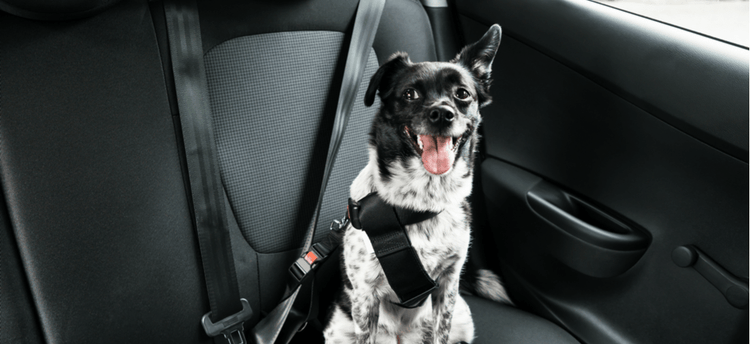
Driving with Pets: Hit the Road Safely
Road trips are better when the whole family can tag along. Unfortunately, the car is often a stressful space for dogs and cats. That’s not to mention the added stress of suddenly arriving in an unfamiliar location. With a little patience and effort, however, many pet lovers can help their dogs and cats become eager travel companions.
Take It Slow
Introducing your pet to the road should be a gradual process. Start by taking quick trips to familiarize them with your car’s interior and the sensation of driving. Gradually, take longer and longer trips as their comfort level increases. Make note of potential stressors and begin to update your travel routine accordingly.
Plan Ahead
On the day of your trip, take care to develop an appropriate schedule. Feed your cat or dog a small meal about three hours before you start your journey. This will reduce the risks of an upset stomach without forcing your pet to go hungry. Where possible, try to plan mid-trip snacks and meals around any stops you’re already making.
Prepare a Travel Kit
You don’t want to get miles down the road only to realize you’ve left some pet essentials behind. Before leaving, make sure you’ve got both day-to-day and emergency pet gear including bowls, leashes, and medication. The ASPCA suggests bringing along enough bottled water for pets to share. Tap water from new locations could potentially lead to an upset stomach or other digestive problems.
Don’t forget that, for your pets, leaving home means leaving behind familiar sights and scents. Bringing a little piece of home along for the ride can keep pets comfortable both en route and once you’ve reached your destination. Consider a favorite toy, blanket, or pillow that may help your pet feel more at ease.
No matter where you’re headed, always remember to bring along proper identification for your pet. If they’re not already microchipped, a vacation is the perfect excuse to talk to your veterinarian about the procedure. It won’t keep them from getting lost (that’s still your responsibility), but a microchip makes it far more likely that they’ll find their way home.
Maintain a Comfortable Temperature
Your pet’s comfort is essential for reducing the risks of both anxiety and motion sickness. Keep the air conditioner running in warm weather or crack the window to maintain a consistent breeze. Don’t let your pets stick their heads out of the window. While it may look cute, riding this way presents countless injury risks.
Find the Right Fit
What type of seat or carrying case should your pet ride in? That answer depends on a number of factors including their size, age, and temperament. Dogs, in particular, have several options. These include everything from traditional crates to special canine hammocks. Whichever type of car seat you choose, ensure that pets are kept securely in place. Moving throughout the trunk or back seat could elevate your pet’s anxiety and cause motion sickness. A secure seat is especially important in the event of sudden stops or changes in direction, which might otherwise cause injury.
Don’t Forget
Never leave your pet alone in a locked car — even if you’ll be back momentarily. In very hot or cold weather, the car could subject your dog to dangerous, even deadly, conditions. Depending on where you live, it may subject you to a fine as well.
Remember to consult with your veterinarian before bringing your dog or cat along for any extended trips. Familiarize yourself with any relevant local laws and regulations too. Crossing state lines could mean new leash laws, special vaccination requirements, and other pet-focused rules.